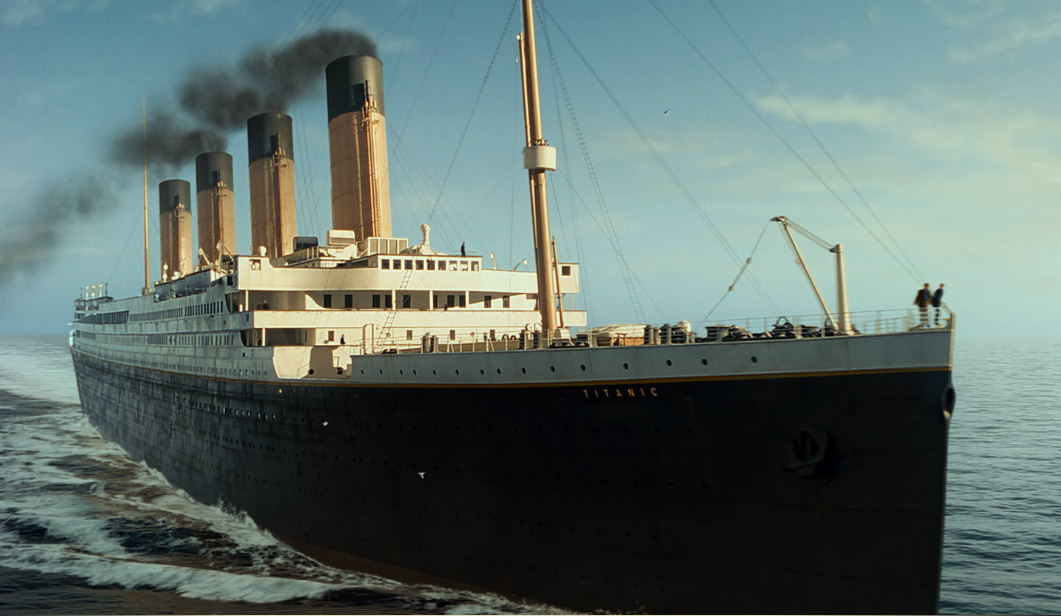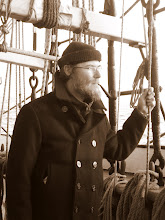Pie in the Sky Project
This one is a thought experiment.
I watched James Cameron's Titanic the other night.
(Yes I cried. Shut up!)
As always when I read about the sinking, or see the movies, I am struck by the apparent docility with which the crew and passengers went to their fates in the icy North Atlantic.
With the exception of the children aboard, everyone else had been born and raised during the Victorian era. They had watched massive technological changes being made at a speed unmatched even in today's world. Of the 2224 people aboard on that fateful night there were well educated people, craftsmen, engineers, labourers, sailors, mechanics, domestic servants, business men and farmers. They came from all over Europe, America, and the British isles. Everyone had skills, ideas, hands, and a desperate desire to survive.
So why didn't anybody do anything to help stop the ship from sinking?
I remember reading the transcript of the American hearings held shortly after the sinking*. One of the surviving crewmen was an ex Royal Navy sailor who was amazed that nothing was done to try to stop the inrush of water. Obviously damage control was high on the list of things a Royal Navy sailor would be trained in.
In Cameron's movie the Captain makes a suggestion of opening the watertight doors to help the pumps and is told by the designer that it would only buy a "little more time" and that the sinking was inevitable.
A little more time is better than nothing right?
So here is the project.
Assuming you could convince the passengers and crew to follow your ideas, how would you save the ship? And If you can't save her, how could you buy enough time such that the S.S. Carpathia, when she arrived at 4:00am, could save most of the passengers.
This is the ultimate Escape Room game.
All you have is what is aboard the ship, and your knowledge of what is happening below decks. This is important since we know more today about how she sank than the crew on board did at the time.
Still an interesting project no?
Here is a video of the sinking from National Geographic. Showing the current ideas of how she sank.
I'll start it off by examining the Captain's suggestion from the movie.
We know that the ultimate problem was that as the breached forward compartments flooded they forced the bow down allowing the water to flow over the too low tops of the water tight bulkheads into the next unflooded compartments. The designer was correct, that as a result the sinking was inevitable.
However, the Captain's suggestion is actually a good one. By judiciously opening the watertight doors in the bulkheads the water levels in the flooded compartments would equalize a bit, but more importantly the angle of the ship would be less steep. This coupled with the pumps would slow the over-topping of the bulkheads. Also since the seas were perfectly flat, allowing the ship to settle more slowly would give the passengers and crew more time out of the water. It would also make it easier to try something else, anything else, without having everything crashing forward on the increasingly steep decks.
Interestingly Royal Navy captains did this during WWI.
One of the biggest risks to a warship if she was torpedoed was capsizing as the compartments on the damaged side of the ship flooded. A capsize was the worst case as it instantly trapped the crew below decks! Captains would order what was known as "counter flooding", intentionally flooding undamaged compartments on the opposite side to keep the ship on a more even keel. The idea was that even if the ship sank as a result of the flooding, she would do so upright, thus allowing the crew more time to get out of the ship and into the boats or the water.
In the conditions in which the Titanic sank the Captain's suggestion above makes good sense.
So...
You find yourself on the bridge of the R.M.S. Titanic at 11:45 pm on April 14, 1912. The mighty ship's engines have stopped, her watertight doors are closed and her Captain has ordered the ship's officers to give him a damage report. Astern you can faintly see the ghostly shape of the iceberg that has doomed the ship on whose bridge you now stand. It is a still, perfectly calm, but very cold night in the North Atlantic, and unless you can come up with something, two hours and forty minutes from now you will be struggling in the icy water with more than 1500 of your fellow passengers.
Unlike everyone else aboard, you know what is happening and what will happen.
What is your plan?
Keep your sightglass full your firebox trimmed and your water... er... life belt tied.
KJ
*The Titanic Disaster Hearings: The Official Transcripts of the 1912 Senate Investigation. A fascinating and scary read, which I highly recommend if you are interested in the history of that tragedy.
Here is a great chronology of all the recorded events on board from the survivors accounts.
There is a PDF file of the chronology here.
Update Feb 12 2016: If you are interested in a kind of macabre time frame in which to work on your plan check out this video of the sinking in real time!




~ 0 comments: ~
~ Post a Comment ~